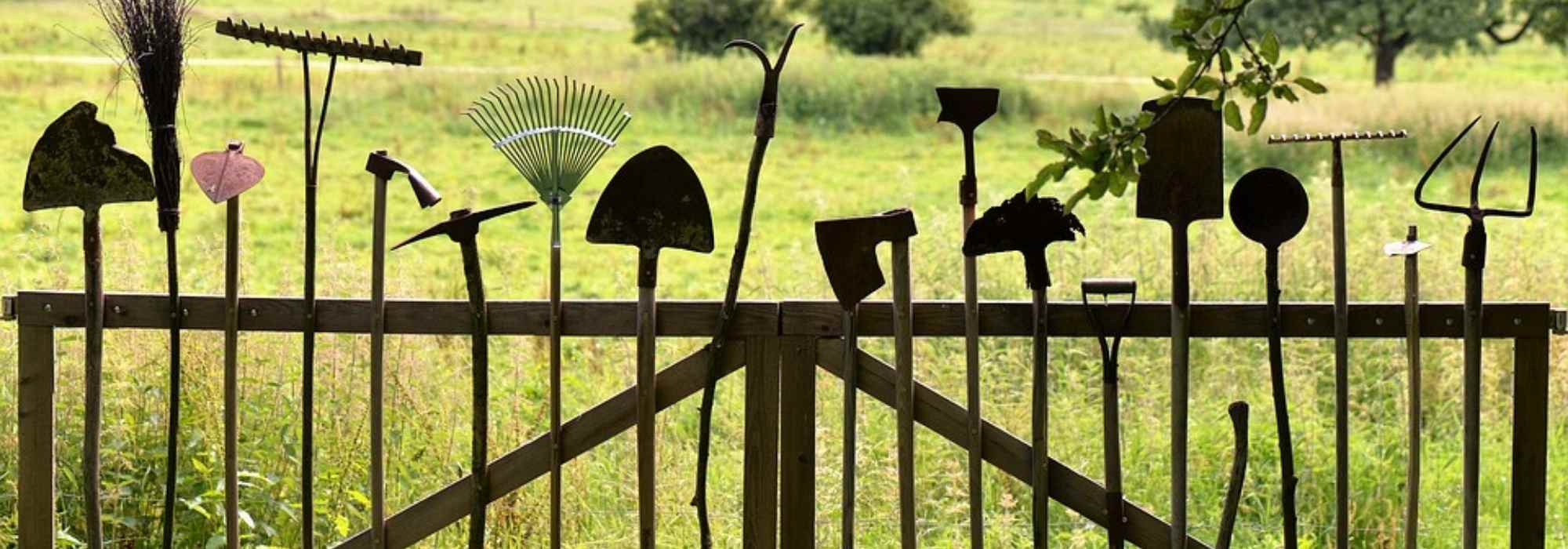
8 essential tools for the vegetable garden
Our selection of tools for everyday use
Contents
To succeed with your vegetable patch, it is essential to have the right tools. Spade, hoe, fork, hand hoe, broadfork, rake and trowel, so many tools needed to weed, spade, turn over the soil, prepare the ground, mark furrows, sow and plant. Each stage of growing requires tools specific to these particular tasks.
Here is a selection of the 8 essential tools for working effectively in your vegetable patch.
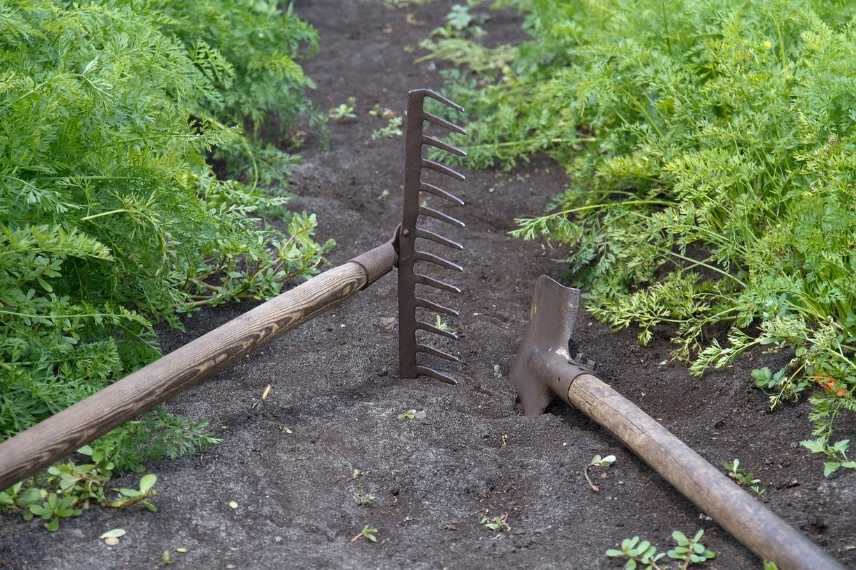
On the importance of the right tools in the vegetable patch…
And discover our complete range of tools suited to working the soil!
Spade
If there’s one essential gardening tool for the vegetable garden, it’s the spade! It consists of a handle ending in a flat steel blade with a sharpened edge, particularly useful for penetrating soil. Depending on model, it features footrests and a T-handle that help the blade penetrate soil and turn it over.
What is it used for?
In the vegetable garden, the spade is indispensable for digging planting holes and for preparing, turning and loosening layers of soil. Simply drive the spade into soil using its weight, then tilt the handle backwards to lift clods and turn them over. With its sharp edges, it enables deep crumbling of soil in light, non-stony ground and on small areas. The sharpened edge of the blade is useful for cutting roots or for uprooting certain vegetable plants and root vegetables such as leeks, potatoes, carrots and turnips. It is also used to bury amendments necessary for healthy vegetable development (well-decomposed compost, organic fertiliser, horse manure…).
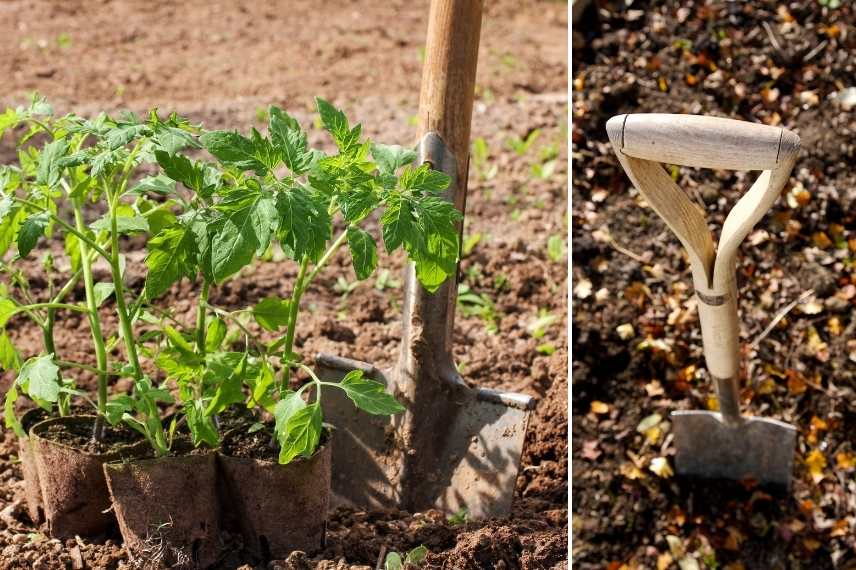
Classic spade with solid blade
- Discover our range of spades
Digging fork
Digging fork, or fork-spade, is a complementary tool to spade. Made of three or four straight, pointed tines, it is indispensable for aerating, loosening, breaking up and crumbling soil to a good depth, without turning soil layers over, simply by dislodging them as the tines penetrate.
For what use?
Less invasive than spade, it allows loosening and working soil without disturbing microbial life, without cutting earthworms and without damaging roots of plants already established nearby. It also allows clearing stones from ground, pulling up weeds, and lifting certain vegetable plants such as leeks, potatoes, carrots and turnips. If spade is used on light soil, digging fork is much better suited to working clayey, heavy and compact or stony soils.
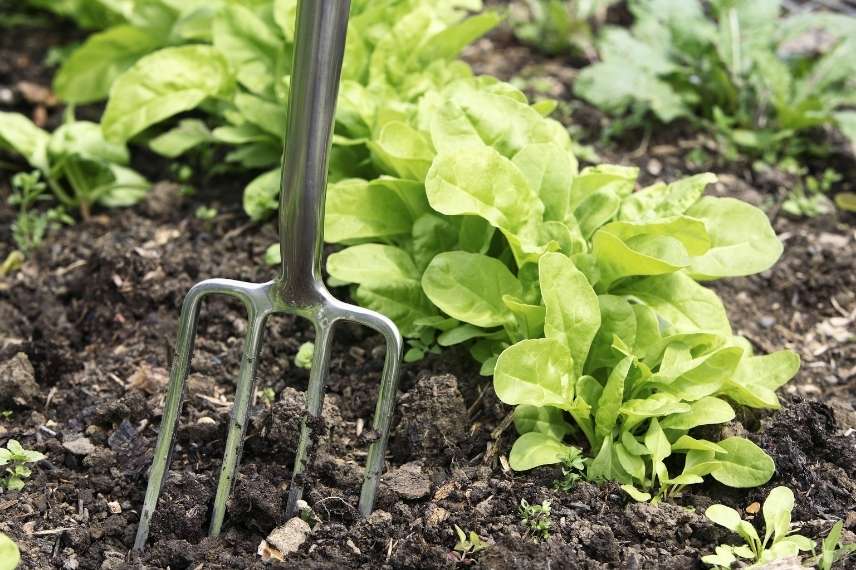
Digging fork
→ Discover our range of digging forks
→ Discover Olivier’s tips on our YouTube channel: Spade, digging fork, grubber: how to choose?
Discover other Vegetable gardens
View all →Available in 0 sizes
Available in 1 sizes
Available in 1 sizes
Available in 1 sizes
Available in 1 sizes
Available in 1 sizes
Available in 1 sizes
Available in 1 sizes
Available in 1 sizes
Available in 1 sizes
Hoe
A hoe is an indispensable tool in the vegetable garden. It is used to loosen soil a second time after using a spade or spading fork. Hoeing is the action of breaking the surface crust of the soil that forms after rain or watering. Consisting of a short or long handle and a sharpened blade set at an acute angle to the handle, this tool aerates the soil, loosens it and thus facilitates penetration of water and air at the base of plants.
What is it used for?
Hoeing helps reduce watering needs by making soil more friable. The hoe can also be used to weed, that is to cut weeds off with a sharp stroke between rows of vegetables. This tool is also used to earth up vegetables, an action that involves bringing some soil up to the base of certain vegetable plants to protect them, reduce watering or blanch them.
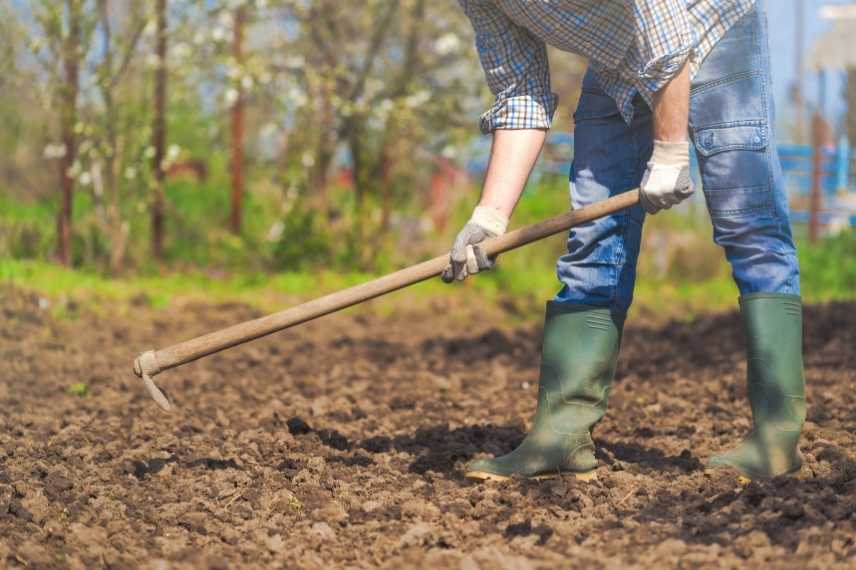
Hoe used for weeding, earthing up and opening furrows
Read also
Main gardening tools and their functionsClaw or fang
Garden claw or digging crook is an essential tool for preparing soil before sowing and planting. It aerates soil and makes it looser thanks to its fork-shaped head fitted with three or four sharp, curved tines.
What is it used for?
A pass with the claw breaks up clods of soil, refines soil texture and levels soil after spading, before sowing or planting. Originally designed to spread compost or manure across fields, it is therefore ideal for incorporating amendments in the vegetable garden. It is also useful for lifting potatoes.
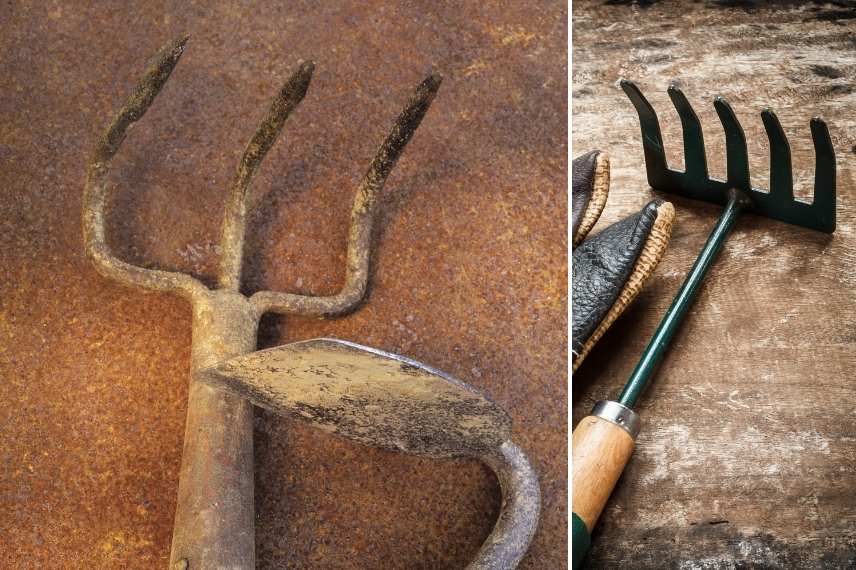
Long- and short-handled claws
Broadfork
Behind this curious name is in fact an organic fork invented by a certain Mr Grelin in 1963. Grelinette is fitted with two handles ending in a wide head with 3, 4 or 5 sharp steel tines. This tool loosens soil to a depth of around 20 cm by simply breaking it up as the tines penetrate. It is much prized by gardeners wishing to adopt an approach to organic and renewable gardening, because unlike a spade or rotavator, the grelinette aerates soil without turning it over and so does not disturb biological balance.
It is both an ergonomic and ecological tool because its use does not disturb soil microbial life nor sever earthworms, which are so useful in the garden. Using it requires a little practice to get the hang of: work is done by moving backwards, standing on the step to drive the head into the soil and simply pulling the handles towards you by leverage. It allows gardener to work standing while reducing physical effort and protecting user’s back, and to prepare vegetable plot soil more quickly and more easily. Models with 4 or 5 tines are wider than a spade and allow faster work.
What is it used for?
This organic fork is used in loose, light soil or in compact, clay soil. It is designed to prepare soil before sowing or planting. It loosens, aerates and crumbles soil. It can also be used to pull out deeply rooted weeds.
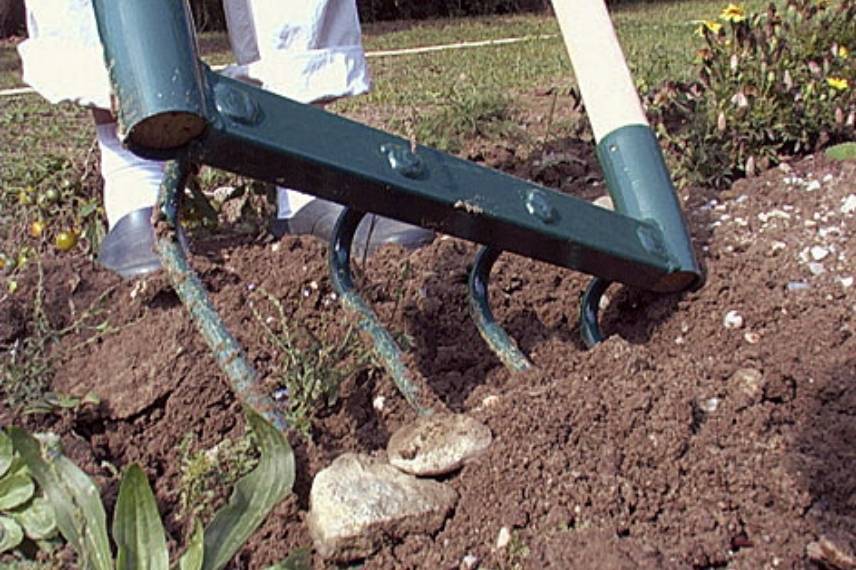
4-tine Grelinette (photo: Girardin, Wikimedia Commons)
Hand hoe
Hand hoe is an essential gardening tool because of its versatility. Various models exist: with blade (a flat rectangular blade), point, claw or fork, with long or short handle. Its head is always fitted with two different blades, so offers different combinations; a blade and a tongue, a blade and a point or a blade and a claw. Double-headed, so double use! Pair chosen according to needs, combination “blade + claw” is probably most versatile.
What is it used for?
Blade is used to weed by hoeing, to dig small holes, to hoe or earth up. Tongue or point is mainly used to mark furrows for sowing or to aerate and loosen surface soil. Claw allows scraping soil around vegetables and dislodging roots of ‘unwanted herbs’ between ranks. Hand hoe will slip easily around vegetable crops without harming roots of plants already well established.
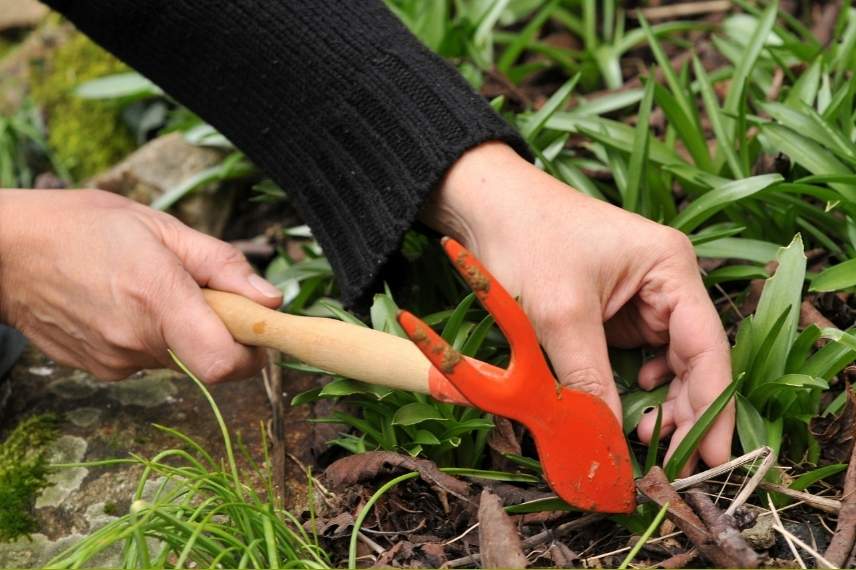
Hand hoe, essential for weeding
Classic rake
A rake is an essential hand tool for the vegetable garden. With a head measuring 30 to 60 cm fitted with 14 or 16 straight or slightly hooked tines, it is the ideal tool to level soil and break up clods of earth.
What is it used for?
In the vegetable garden, use it to refine and level the surface of freshly dug or hoed soil before sowing. It is commonly used to close furrows and lightly firm the soil after sowing using the back of the rake head.
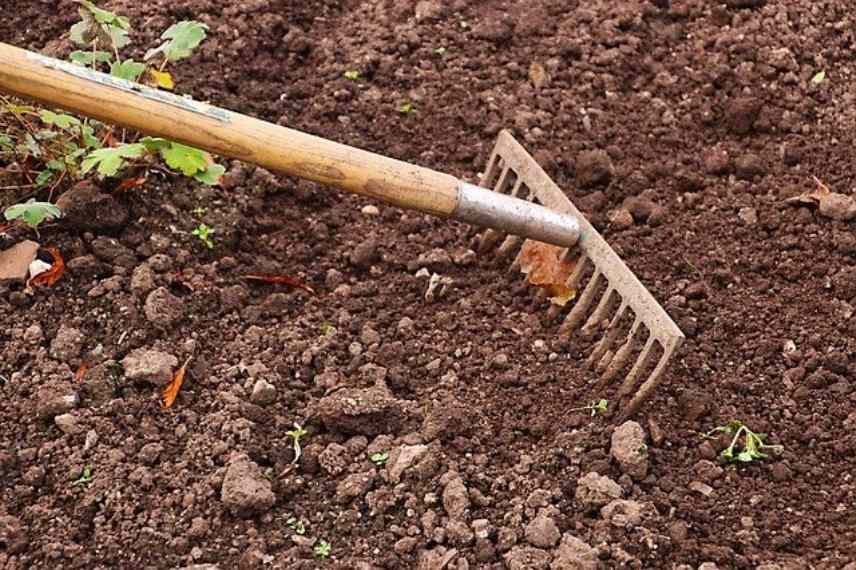
Classic rake, indispensable for levelling soil
Dibbers and transplanting trowels
Dibbers
There are several kinds of dibbers:
- Simple dibber
This is a small hand tool with a handle and a conical, pointed end, made of hardwood, steel or composite materials. The dibber allows quick digging of holes of varying width and depth in soil to place young vegetable plants, large seeds such as squash or melon seeds, or to make furrows for sowing in light soils. It is also used for pricking out small seedlings produced by vegetable sowings.
- Specialised dibbers
– For potatoes :
There are dibbers specially designed for planting potatoes. Equipped with a long handle and a basket, this type of dibber allows digging wide, deep planting holes in previously worked soil without having to bend down too much. The basket retains the soil, forming a kind of soil core; all that remains is to place the tubercle at the bottom of the hole thus dug.
– For leeks :
This tool has a long handle and a wide head fitted with sharp, pointed teeth. The leek dibber allows, while protecting the gardener’s back, digging straight trenches for sowing, pricking out or planting. Simply push the tool into the soil to make holes deep enough to accommodate young leek plants, which need to be well buried to develop their “whites”.
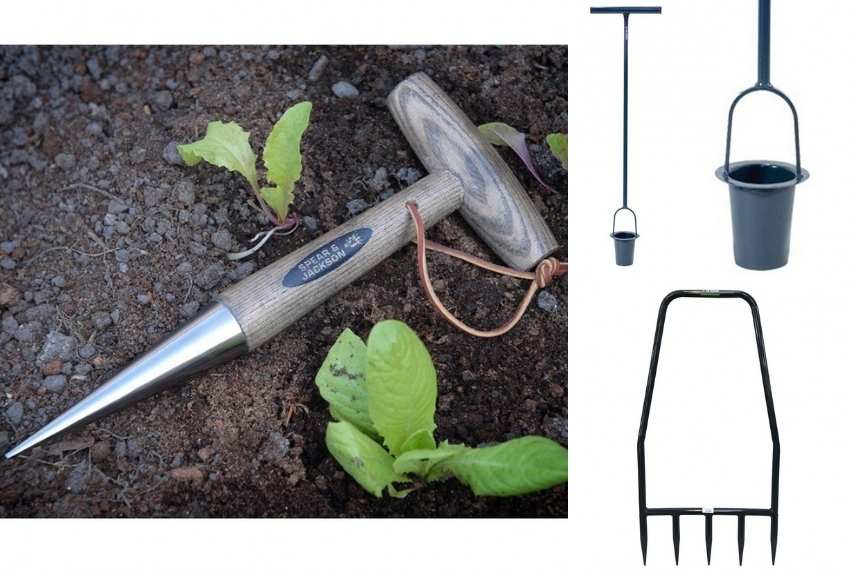
Simple dibber, potato dibber, leek dibber
Transplanting trowel
The transplanting trowel resembles a small, sharpened trowel or shovel, more or less wide. They come in all sizes, with short or long handles. Narrow-bladed models are better suited to planting in clay soils. This tool is used in soils that are already well prepared and loosened.
What is it used for?
It is valuable for digging planting holes and for accurately placing young plants without disturbing neighbouring plants already in place. It is also used to bury fertiliser in planting holes.
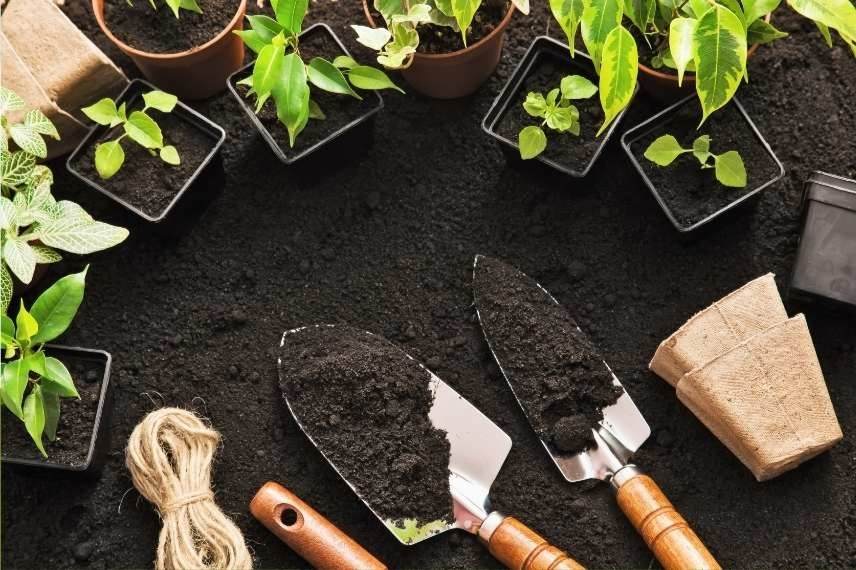
Transplanting trowel
Discover :
- our wide range of planting tools
- everything you need to know about dibbers and transplanting trowels to choose the right one for your intended use
Find out more
Also read our article: Gardening for beginners: how to choose the right tools?
- Subscribe!
- Contents
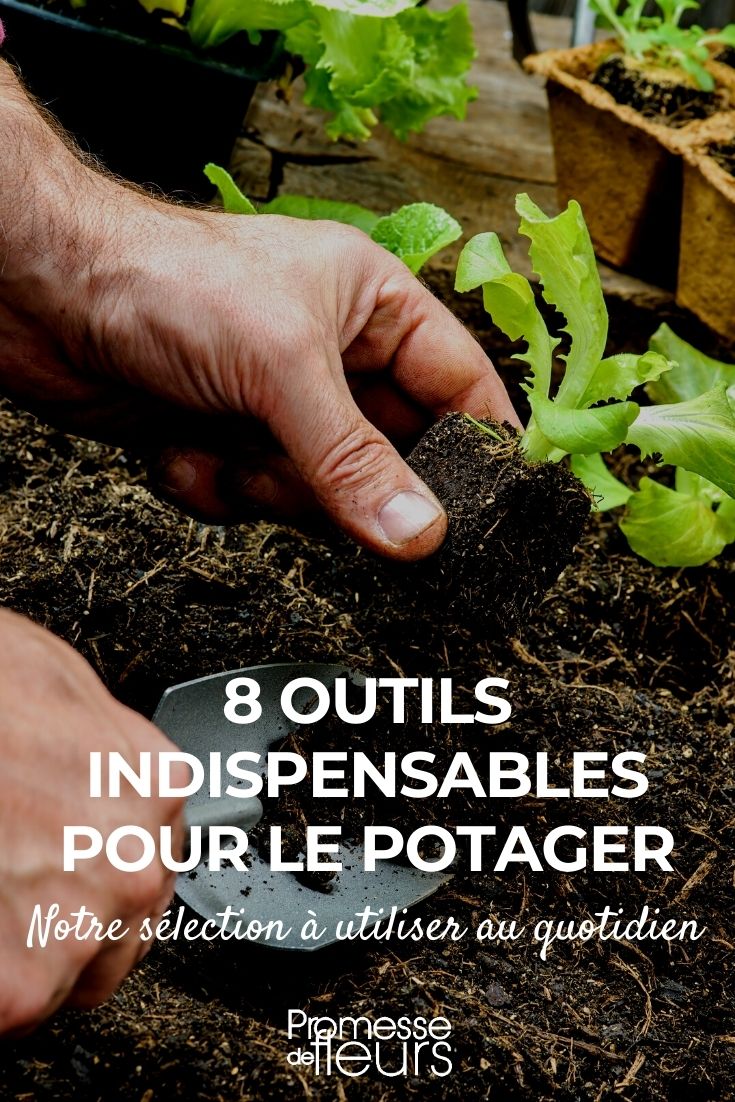































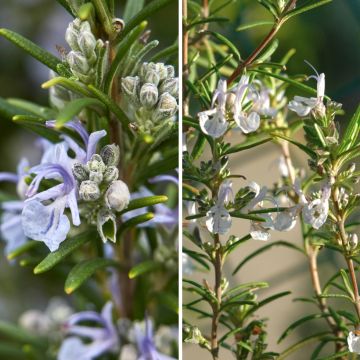
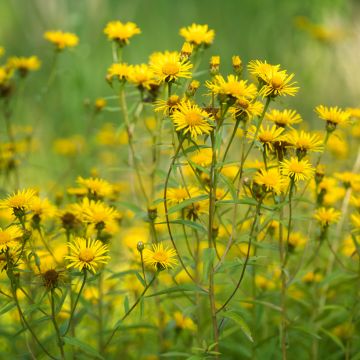
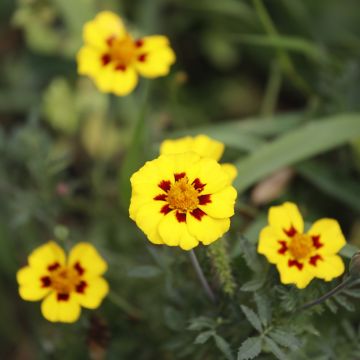
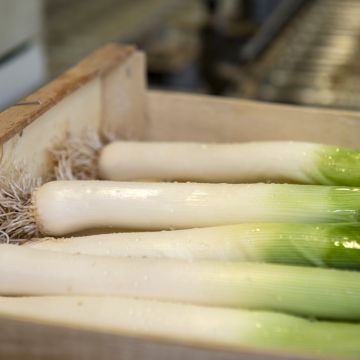
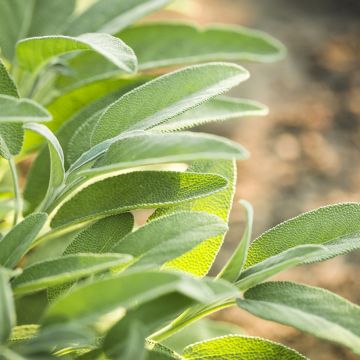
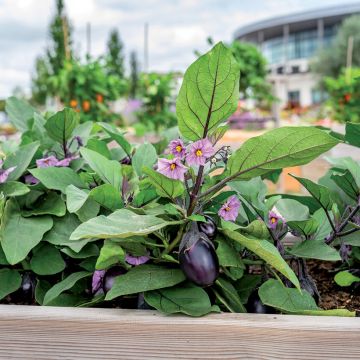

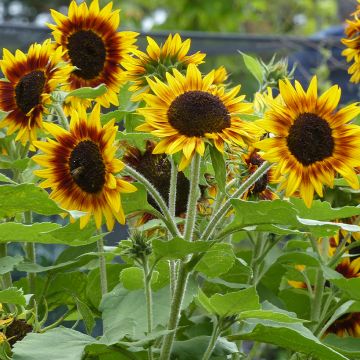
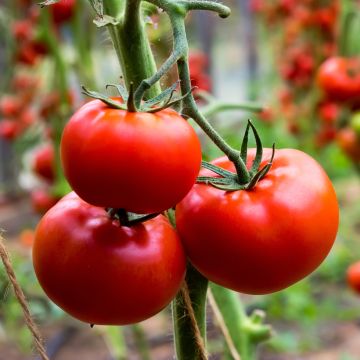
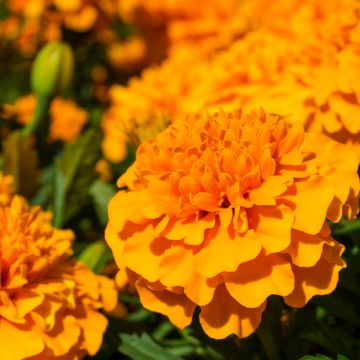
Comments